The 3K Subscriber Special & 2-Year Anniversary Q&A: US Election Predictions, Biden's Record, & Ethiopia
Thanks for the 3K subs! Let's talk about My predictions for the US Election
Hello, readers! Thanks for being here. Since starting this letter in November 2022, my subscriber growth has been incredible.
I’m excited to see what next year brings. Thank you to my readers in 127 countries!
Here's an 8-question Q&A where I answer questions from subscribers.
1. Who Do I think Will Win the US Election?
My guess is Kamala, but just barely. While I'm no expert, I think she holds the blue wall (Michigan, Pennsylvania, & Wisconsin) but loses the Sunbelt states (Georgia, Nevada, Arizona, North Carolina).
2. What voting trends do you expect to see?
I think we’ll keep seeing trends of increasing educational polarization and decreasing racial polarization.
In 2016, here was the breakdown in the minority vote by gender:
In 2016, Black women were the most loyal demographic to the Democratic Party, while “other races” (East Asians, South Asians, Pacific Islanders, Arabs, Turks, Persians) showed the least loyalty of groups that prefer democrats.
By 2020, minority loyalty to the Democrats declined overall, though the Democratic party still won each group.
I predict similar trends in 2024: Trump likely captures around a quarter of the Black male vote, a third of the Hispanic vote, and Asian voters continue to show less partisanship.
I expect education-based partisanship to keep rising, with degree-holders leaning Democratic and those without degrees leaning Republican—a trend growing that became more pronounced during the Obama years.
Some argue Democrats are the 'smart' party and Republicans the 'dumb' one, but that oversimplifies things. Democrats didn’t consistently win the college-educated vote until Obama; before him, they never secured over 50% of it, as shown in the chart above. This is a recent phenomenon.
Instead, I see college education as more of a signal of a value system. If you align with professional managerial class (PMC) values— prioritizing racial and gender equality in policy, supporting censorship of ‘hate speech’, viewing misinformation as a threat to democracy, or using pronouns to respect gender identities—you’re more likely to vote Democrat. These values, which are derided as “woke”, by detractors, can alienate some groups, including some minorities.
3. Can you see Trump winning?
If Trump does win, this will likely be his map.
In a nutshell, I believe Kamala has a slight edge (55%-45%), though it would likely be a close win. If Trump wins, he’ll probably take the Electoral College decisively while losing the popular vote. I also expect Trump to declare victory on election night, regardless of final results.
4. How do U.S. territories in the Caribbean and the Pacific fit into Washington's defense strategy and the broader economics of the United States?
Here’s a really good video on that:
5. What do I think of Joe Biden?
Academia will likely rate Joe Biden favorably. For most Americans, his best policy may be industrial policy, while his weakest could be illegal immigration—or perhaps foreign policy, depending on your perspective.
Interestingly, there’s continuity between Trump and Biden that often goes unnoticed by the mainstream media.
Industrial policy, in essence, is the government’s use of tools to boost growth in specific sectors. America frequently relies on certain tools, like cheap loans, but rarely uses others like state owned enterprises.
For instance, Obama’s American Recovery and Reinvestment Act of 2009 wasn’t just crisis stimulus; it included $90 billion for green technology through the Department of Energy, using cheap loans, grants, and loan guarantees to advance climate manufacturing.
Some companies thrived with government loans, like Tesla, which scaled production with a $465M loan and paid it back 9 years ahead of schedule, while others, like Solyndra, collapsed even after receiving $535M.
Meanwhile, America seldom utilizes state owned enterprises for industrial policy. America has the least raw number and proportion of state owned enterprises in all advanced democracies.
I view Trump as the visionary and Biden as the executor. But to understand this, we must first look at Obama.
Obama was the last president committed to free trade, believing in domestic production only when the U.S. had a clear competitive advantage. America excels in design, engineering, marketing, high-precision manufacturing, software, supply chain management, and advanced R&D, positioning itself as a “professional managerial class” economy.
For lower-cost consumer goods, however, assembly and testing are generally outsourced to Mexico, China, or Southeast Asia.
America isn’t alone in outsourcing labor. The European Union relies on Turkey, South Africa, Morocco, and even poorer European countries like Hungary and Romania for affordable labor to support wealthier nations like Germany and France.
In East Asia, Japan initially used neighboring countries for cheap labor, and as South Korea, Singapore, Hong Kong, and Taiwan grew wealthier, they too turned to lower-cost labor across Asia. Now, countries like China and Malaysia are doing the same.

Obama tried to launch an anti-China, multilateral partnership called the Trans-Pacific Partnership with Canada, Mexico, Chile, Australia, Brunei, Japan, Singapore, Malaysia, New Zealand, Peru, and Vietnam to eliminate 18K tariffs while upgrading safety standards, environmental, union standards, and anti-corruption measures to the rest of the trade region. It also STRONGLY protected American IP.
However, Trump was very transactional & nationalist.
Trump had distain for multilateralism, so destroyed the TPP. Trump prefers bilateral trade, negotiating one on one with partners. For example, Trump signed a limited free trade deal (digital trade, industrial & agricultural trade) with Japan’s Shinzo Abe in 2019.
Trump’s industrial policy was:
1. Tariffs: Trump imposed tariffs on $360B of Chinese goods to protect American firms & jobs from Chinese competition. This expanded Obama-era tariffs on Chinese solar panels, which aimed to counter low-cost imports that undermined U.S. producers. Despite the inflationary effect of tariffs, inflation remained near the Federal Reserve’s 2% target, and it even decreased during COVID due to reduced demand.
2. Renegotiated Trade deals: Trump replaced NAFTA with the USMCA
The USMCA updated labor standards, rules of origin for car manufacturing, and digital trade. Here are some key provisions:
Raised the required North American content for tariff free cars to 75% (up from 62.5% under NAFTA).
Mandated that 40-45% of the car’s value come from workers earning at least $16 per hour, aiming to boost wages and curb low-wage dependency on Mexican labor.
Strengthened labor Rights for Mexican workers, requiring union protections.
Banned tariffs on digital products like software, music, and E-books, expanding access for U.S. tech firms and content creators to Canadian and Mexican markets.
3. Corporate Tax cuts: Trump reduced the corporate tax rate from 35% to 21% to encourage companies to relocate production to the U.S.
4. Energy Independence: Since energy is a key input for manufacturing, he relaxed environmental regulations, opened federal lands for drilling, and encouraged coal and shale production.
5. Nationalist Executive orders: Trump issued executive orders directing federal agencies to prioritize American-made goods in procurement.
6. Weaken the WTO: By blocking new trade judge appointments, Trump rendered the WTO’s Appellate Body largely nonfunctional. This allowed Trump to pursue rule-breaking WTO tariffs with impunity.
Biden’s policies that are similar to Trump:
Continued to leave WTO judge seats vacant, weakening the organization; his clean energy subsidies in the Inflation Reduction Act also conflict with WTO rules.
Allowed U.S. oil production to surge, making the U.S. the world’s top oil producer in human history.
Retained the USMCA.
However, here’s how Biden’s policies that are different to Trump. Trump’s Tariffs are “defense protectionism” while Biden utilized “offense protectionism” with subsidies.
Inflation Reduction Act - This bill which has very little to do with inflation, gave incentives to climate focused industries in green technology, electric vehicles, and renewable energy.
CHIPS & Science Act - This bill made tax incentives for companies to make semiconductor fabrication plants in America.
A tax credit is basically a “targeted corporate tax” cut for specific economic activity. So if Intel spends $1B on a new chip factory, thanks to Biden’s 25% tax credit, Intel can claim a tax credit on $250M, reducing the taxes it owes by that amount.
The government, through the Department of Commerce, provides a loan guarantee to a private lender, which provides a loan to a corporation for the fabrication plant. How a loan guarantee works is that a firm like TSMC or Intel has to go through an arduous application process to get chip funding; then, a bank provides the loan, and the Department of Commerce “backs the loan”. This means is that if Intel or TSMC defaults on the loan, the government will pay the entire amount of the unpaid loan. ~$30B in loans were given to firms like Intel, Micron, TSMC, and Samsung.
Biden has also created new science centers funded by taxpayers and bondholders to advance technological advancements in semiconductor material science, packaging, automation, and quality control. The idea behind these facilities is that the government is funding research that will eventually be commercialized that will enhance productivity, reducing the need to outsource aspects of the chip supply chain—similar to how the tractor reduced the need for large numbers of farm laborers. These facilities are:
National Semiconductor Technology Center which will be built in NY
More funding for Manufacturing USA R&D Institutes:
PowerAmerica, associated with North Carolina State University, to advance semiconductor technology research
NextFlex, associated with UC Berkeley, focused on hybrid electronics
America Makes in Youngstown, Ohio, collaborating with Ohio State for 3D printing.
ARM Institute, associated with Carnegie Mellon, Pennsylvania, focused on advanced robotics and automation.
In terms of results, we just started seeing them. In October this year, TSMC's Arizona plant has achieved a yield rate that outpaces its Taiwan facilities by approximately 4%, underscoring a major accomplishment for U.S.-based semiconductor production.
Immigration:
Socially, there are many groups of Americans who do not like illegal immigration. In 2024, a majority of Americans want immigration to decrease.
Biden has overseen the largest increase in illegal immigration in the 21st century. If you look at the graph below, the gold section represents illegal immigrants and asylum seekers:

When Biden took over, he offered a more “humane” border approach by reversing many executive orders of the Trump administration. There’s a significant difference between Biden and Trump on illegal migration, which I see more as an issue of asylum status. I will just focus on two.
When Trump came into office, he invoked the executive order Title 42, which allowed the Department of Homeland Security to swiftly expel migrants. When Biden came into power, he kept Title 42 until May 2023 but also encouraged migrants to utilize legal pathways, such as opening regional processing centers in Latin America to assist migrants in applying to come to the US, and by expanding access to CBP One, an app for migrants to schedule asylum appointments.
Trump also implemented an executive order that is referred to as “Remain in Mexico” that forced asylum seekers to wait in Mexico for their US immigration hearings. Out of the 70K migrants who remained in Mexico, 1500 were raped, murdered, kidnapped, or abused after being returned, so Biden suspended “Remain in Mexico”.
In other words, the “tradeoff” was that Biden allowed a more humanitarian border policy at the “expense” of more asylum seekers and illegal immigrants entering the country. According to the NYT, Venezuelan gangs entered the country and were present in New York City.
Overall, Biden has signed effective legislation that is more “American First” than Trump, where effects will pay dividends for decades. However, he may have gone overboard with his relatively laxer illegal immigration/asylum policy.
6. What do you make of Ethiopia’s economic future in general?
I am going to redo my Ethiopia series even though its my most popular article. I feel like since my Burkina Faso article, or even my Sudan article, I feel like my storytelling skills have improved.
Right now, even though Ethiopia was not colonized, it is poorer than most African countries. But it’s growth rate is pretty fast. Look at the graph below, Ethiopia is now catching up to the Sub-Saharan African average.
Frankly, the fact that Ethiopia was not colonized (Ethiopia defeated Italy in the 19th century, expanded its borders, and was a full League of Nations member, but got occupied by Italy in WW2) yet is still poorer than most African countries is a very sad reality.
Overall, I think Ethiopia’s future is much brighter than most African countries. Besides coffee, Ethiopia isn’t much of a commodity exporter. Ethiopia brings in more foreign currency through its airlines than it does selling gold & coffee combined. If gold prices collapse, Ethiopia won’t be affected that much, while a country like Burkina Faso or Mali would suffer harshly if gold prices declined.
Also, Ethiopia, unlike most of Africa is decent at growing some food crops.
After decades of being terrible at growing food, Ethiopia has surpassed the African average in growing wheat and has exceeded the “Net Food Importing Developing Countries” average defined by the UN’s Food and Agriculture Organization.
Right now, Ethiopia is undergoing a “shock therapy” program. In Christmas 2023, it defaulted on a $33M monthly interest payment. Ethiopia also ran out of foreign reserves to import food and fuel (You need at least 3 months of reserves. Ethiopia had 15 days of reserves in 2023). This made Ethiopia seek out aid from the IMF and World Bank.
The IMF and World Bank are providing $20B in concessionary lending for Ethiopia to undergo reforms.
Like Nigeria & Egypt, Ethiopia is now floating its currency. This move will lead to depreciation but will conserve foreign reserves, as the government will no longer need to support the local currency by selling off reserves.
Unlike Nigeria, Ethiopia’s government has earmarked ~$2.5B to keep food, fuel, and fertilizer subsidies relatively affordable for Ethiopians and to maintain government salaries. Ethiopia has prepared a relatively large package to ease the reforms’ impact on ordinary people.
Additionally, Prime Minister Abiy Ahmed was already pursuing its own liberalization agenda before the IMF provided cheap loans. For example, Abiy allowed foreign capital in telecommunications and banking.
I think Ethiopia will experience some growing pains but will likely rebound, reach lower-middle-income status, and surpass the average African income by 2030.
7. Do you think an increasingly assertive Ethiopia will see its ambition of regaining access to the Red Sea in the near future?
Ethiopia, being landlocked, is keen to avoid paying billions to Djibouti merely for import and export access. Eritrea has denied Ethiopia use of its ports, and Ethiopia has recently defaulted on debt.
In a move signaling desperation, Ethiopia struck a deal with Somaliland, an unrecognized separatist state of Somalia with no international legitimacy. In response, Somalia has leveraged its alliances with Turkey and Egypt to counter Ethiopia’s influence. Recently, Egypt supplied weapons to Somalia, heightening tensions with Ethiopia. Prime Minister Abiy Ahmed responded with a warning, stating that Ethiopia would “humiliate anyone who dares to threaten us,” and deployed heavy weaponry along the Somali border..
A few weeks ago, Egypt, Somalia, and Eritrea made a I hate Ethiopia Club security pact, to contain Ethiopia’s influence.

Egypt opposes Ethiopia’s Grand Ethiopian Renaissance Dam, fearing it could restrict the Nile’s water flow. One of the Nile’s primary source for Egypt is the Blue Nile, originating in Ethiopia. Despite Egypt’s longstanding pleas and references to a colonial-era water treaty, Ethiopia remains unmoved, as it was excluded from that original agreement.
Somalia opposes Ethiopia’s deal with Somaliland, which reportedly grants Ethiopia a 50-year lease on a 20 km coastal strip in Somaliland, including rights to establish a naval base and port access. In return, Somaliland would gain ownership in Ethiopian Airlines and Ethiopian support for its independence.
Eritrea harbors resentment toward Ethiopia due to Emperor Halie Selassie’s forced annexation in 1962, intended initially as a federation. After the communist Derg overthrew the Emperor, their disastrous collectivization farming policies led to civil war. Following the Derg’s ousting, Eritrea voted for independence in 1993 under a new Ethiopian constitution. Recently, Ethiopian Prime Minister Abiy Ahmed described Eritrea’s secession as a "historical mistake."
After Eritrea's independence, it maintained a trade deal with Ethiopia, shared a common currency, and provided Ethiopia port access without fees. However, in 1998, a border conflict over the town of Badme erupted, and by 2000, the UN awarded Badme to Eritrea. Ethiopia refused to honor the decision until 2018, when Prime Minister Abiy Ahmed accepted it, aiming for tariff-free port access; Eritrea, however, did not grant this.
Eritrea later allied with Ethiopia to fight the TPLF in its civil war. Eritrean President Isaias Afwerki harbors deep resentment toward the TPLF due to the Badme conflict. In 2022, when Abiy made peace with the TPLF, Isaias was angered, having hoped to eliminate the group entirely.
Thousands of Ethiopian troops are currently in Somalia, targeting Al-Shabaab, an Al-Qaeda-linked group. Ethiopian Prime Minister Abiy Ahmed knows Somalia is unlikely to expel them, given their role in weakening Al-Shabaab.
While a war is not inevitable, it remains a possibility. Abiy Ahmed must navigate with 4D chess-level strategy to secure port access peacefully.
8. What do you think of Charter Cities?
I have no issue with a country designating land as a Hong Kong or Macau-style charter city, given those regions have higher living standards than Mainland China and Hong Kong was a major investor during China’s opening.
Success is another matter, as I discussed in my special economic zone article on Fordlandia, Brazil. I plan to expand on this in a Part II article on special economic zones.










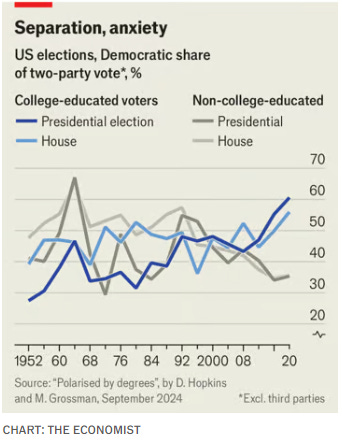


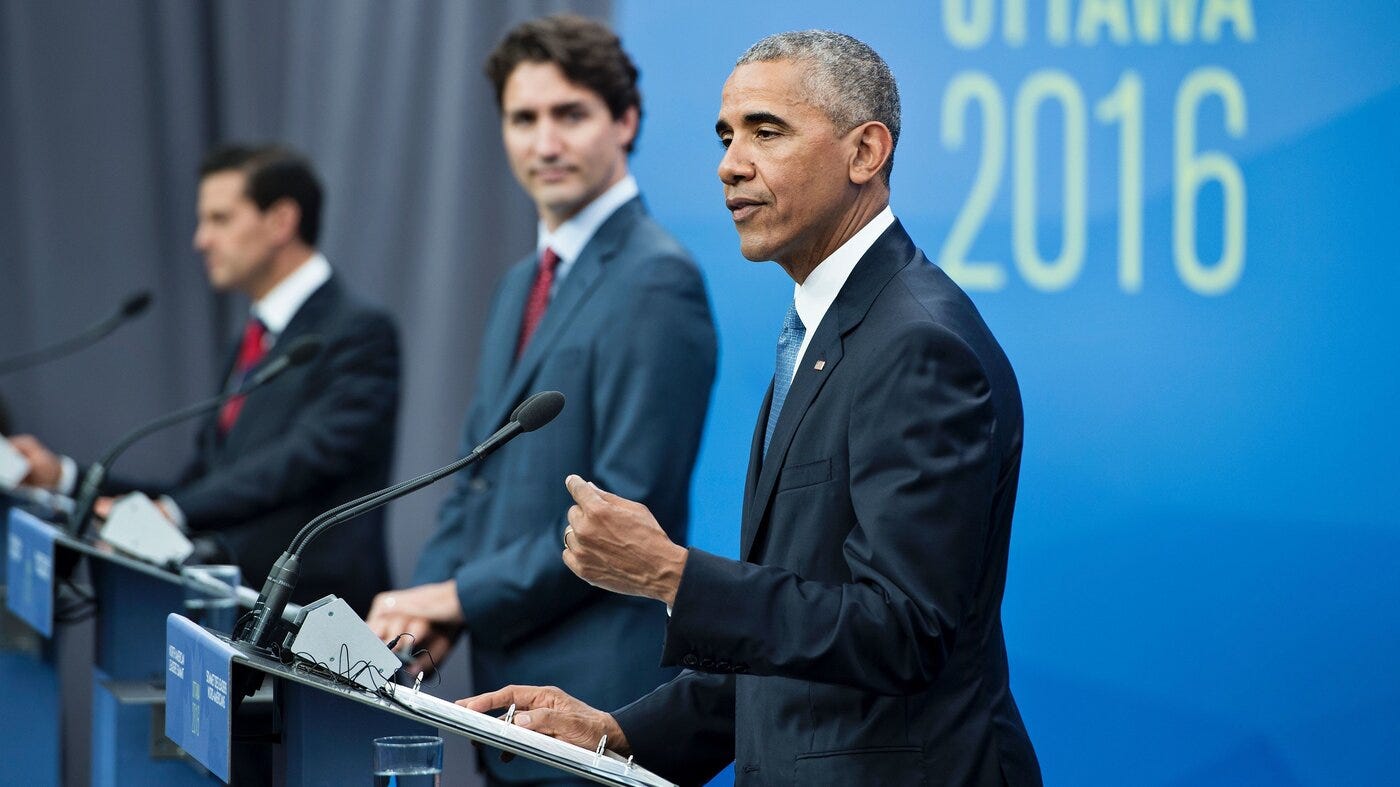
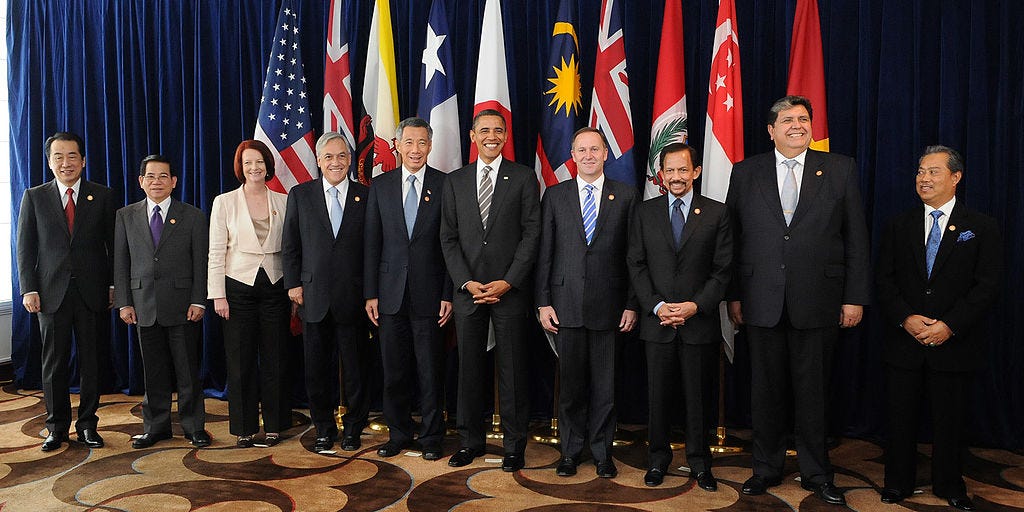
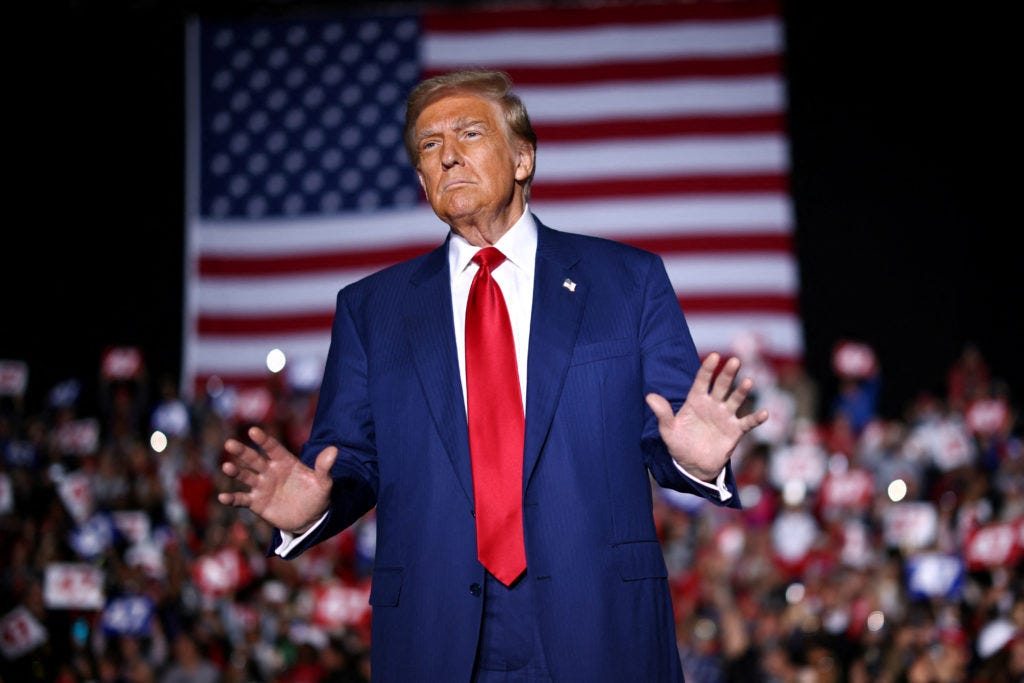

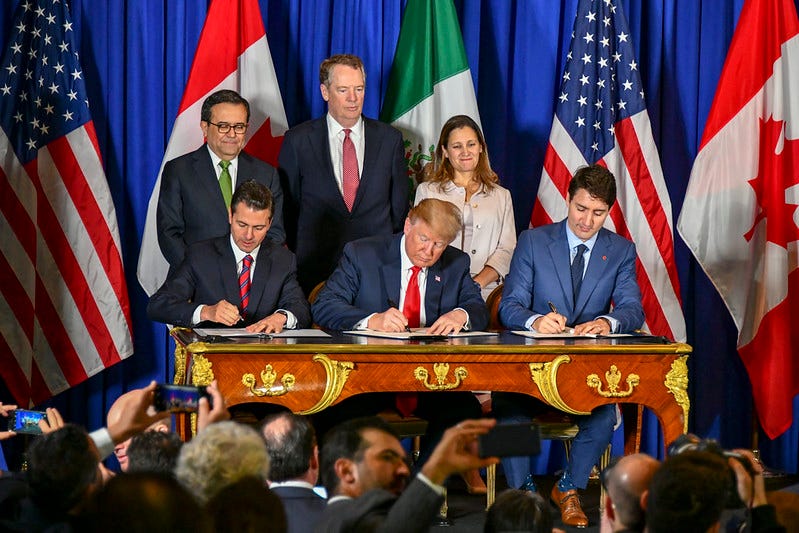
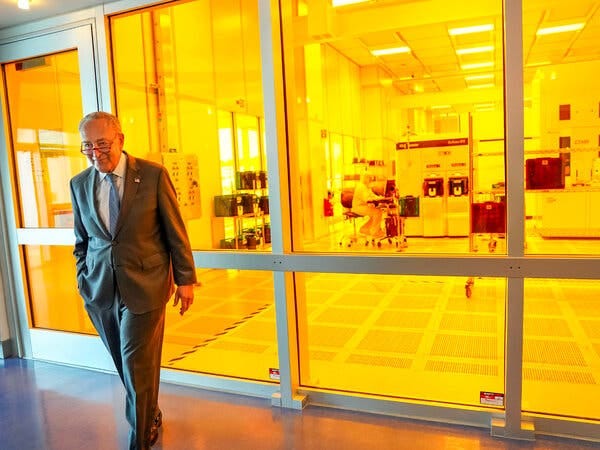
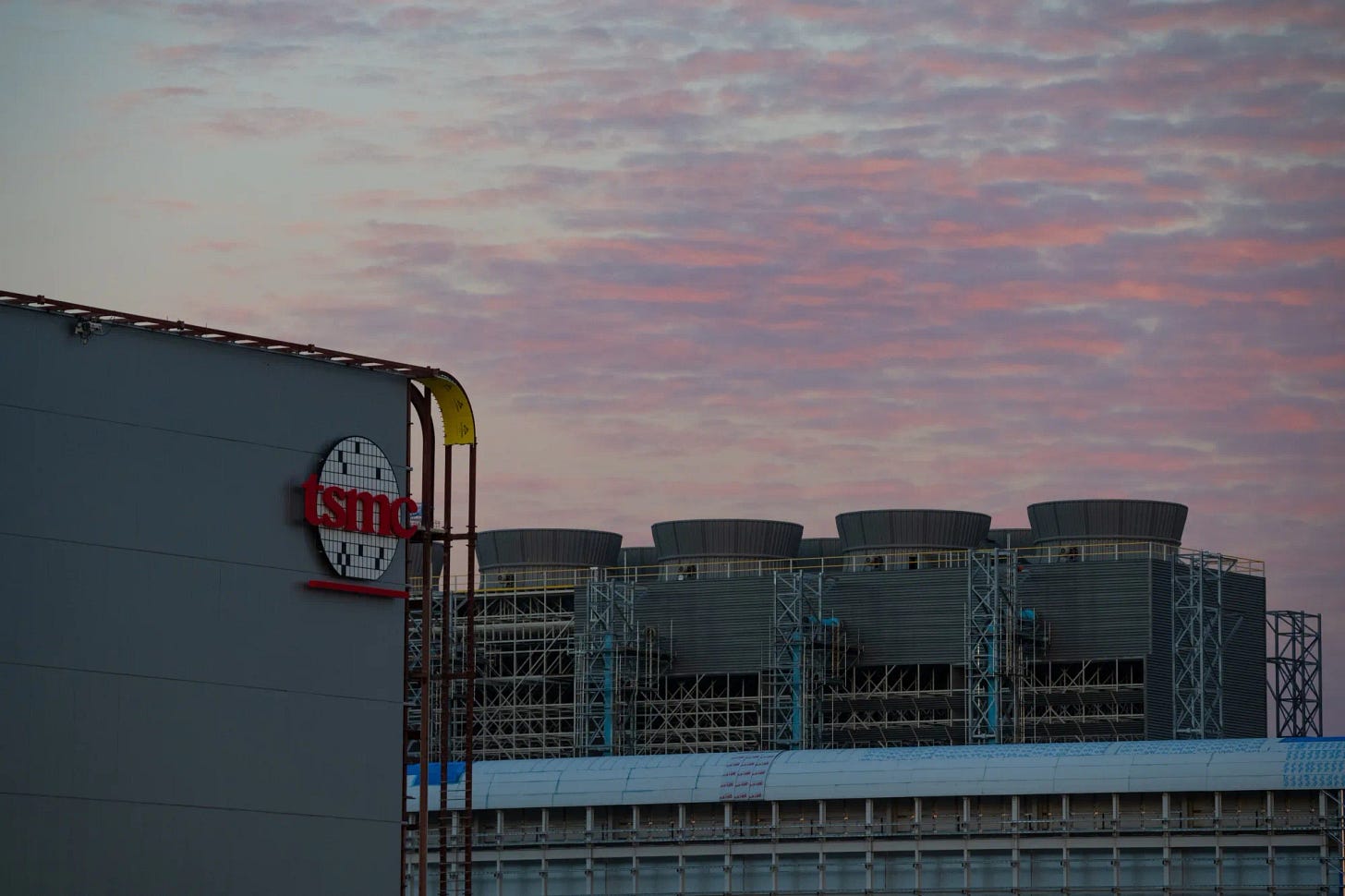
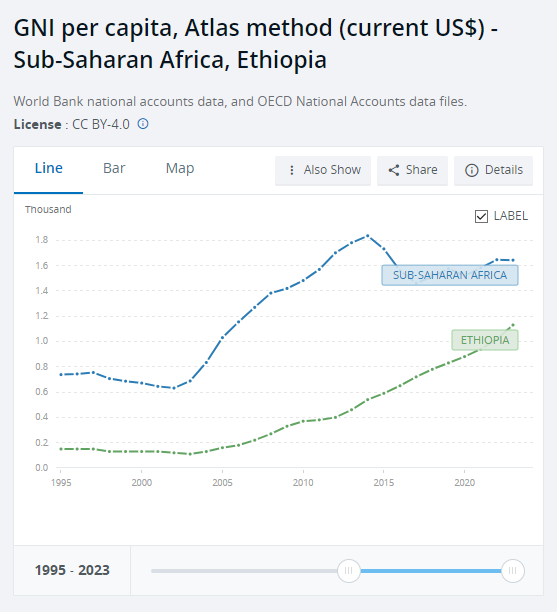


In America do people not vote for different parties in state and federal elections? Or is it more of a party loyalty sort of deal. For example, if I was living in California or New York, I would probably vote for Republicans at the state local level but Democrats at the federal level. This type of voting pattern is very common in Australia.
> I predict similar trends in 2024: Trump likely captures around a quarter of the Black male vote, a third of the Hispanic vote, and Asian voters continue to show less partisanship.
I'm not surprised to be honest. Most countries outside of the West suffer from strong man syndrome. Trump is exactly the type of person who would come to power in Latin America, Africa and Asia.
> Additionally, Prime Minister Abiy Ahmed was already pursuing its own liberalization agenda before the IMF provided cheap loans. For example, Abiy allowed foreign capital in telecommunications and banking.
The combination of these reforms is also good. You can't exactly have modern banking without modern telecommunications. A more developed financial system is crucial for the next wave of economic growth. More agricultural productivity growth will also drive Ethiopia farmers to look for more side hustles outside of agriculture like construction and low skill manufacturing.
Ethiopia should try to get a guest visa program with China since they're sort of allies. A lot of industrial knowledge came to Bangladesh through migrants to Southeast Asia. Having a lot more Chinese speakers will also make them more competitive in bringing in Chinese factory investment.